Introduction
Some companies have a master plan before they even hit the market, while others just decide to roll the dice and see what happens.
Specialty coffee company Craft and Mason knew what they were getting themselves into (both practically and financially).
But they also didn’t waste too much time planning for scenarios that may (or may not) unfold one day.
Jeremy Mason, a co-founder of Craft and Mason, took a passionate hobby and transformed it into a business that has doubled in growth for the past four years.
Here’s how they were able to do achieve that stunning growth without spending big in marketing, advertising, or promotion.
Step #1. Conduct basic market research
Mason became interested in specialty coffee at a beer fest called Darkwood Day back in 2013.
There was a coffee shop across the parking lot, so he decided to stroll in and try a specialty cappuccino.
The realization dawned on him that specialty coffee could blossom into a wine-like appreciation (with the market cap to match).
That’s because you can’t just pick up specialty coffee at a local grocery store. And producing it isn’t necessarily very easy, either.
In fact, it’s an extremely nuanced process that requires an expert eye and deft touch.
Mason notes that you have to know when to pick the coffee cherry depending on the season and ripeness to produce a certain flavor.
On top of that, you need to know how to remove the fruits and process the bean, too.
The process isn’t doable by just anyone.
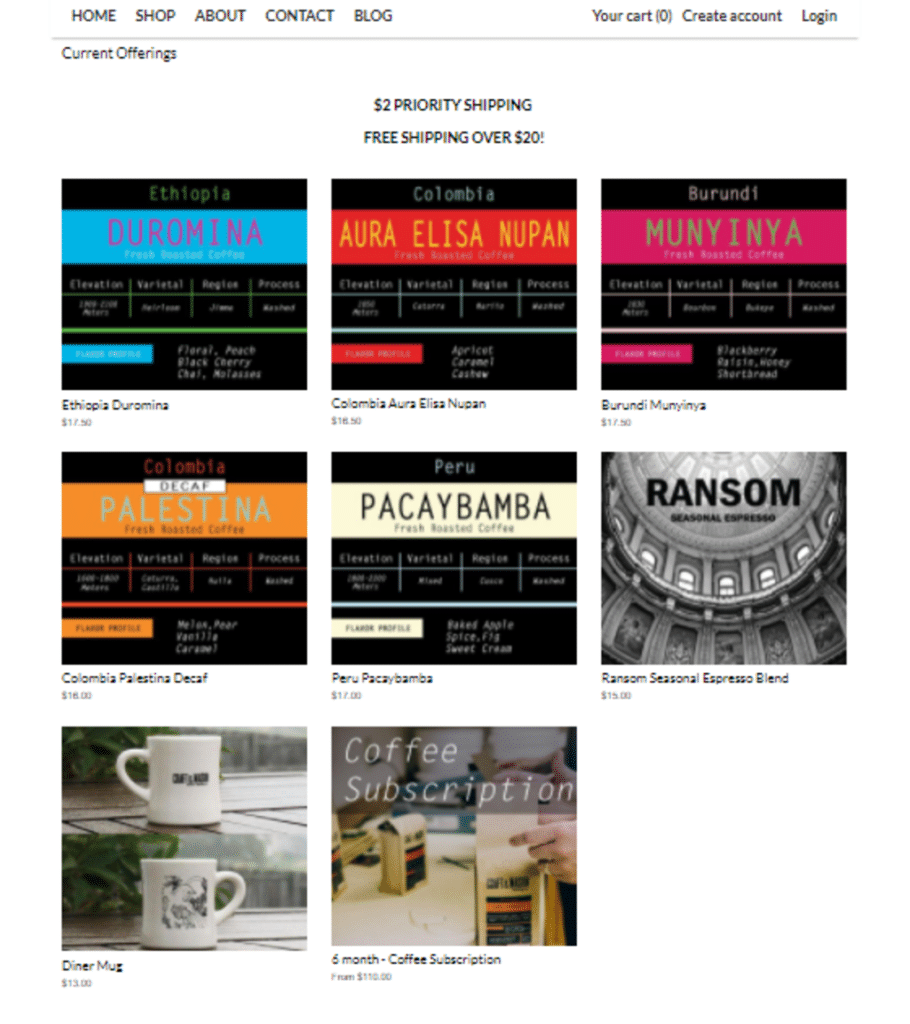
The “best” idea doesn’t just come out of the blue like this. You often have to roll up your sleeves to do a little research, first.
So if you don’t get so lucky to stumble upon the idea, you can conduct basic market research on Google.



Use general searches to gauge trends like that last article on the San Diego Union-Tribune:
“Craft coffee scene is buzzing.” Meaning that it’s growing, fast.
Ideally, you want to see that there’s already search volume or demand. You want to make sure there’s already a market for your product.
For example, you can quickly pull up Google Trends to see if this is a new, growing market.
Here’s what you should see over the past five years for “specialty coffee.”



So far so good!
Counterintuitively, you also want to see a bunch of competitors when you do these searches.
If people are searching for your goal product, you’ve got a market for your product.
You can even use sites like Product Hunt to search specifically for stuff like coffee!
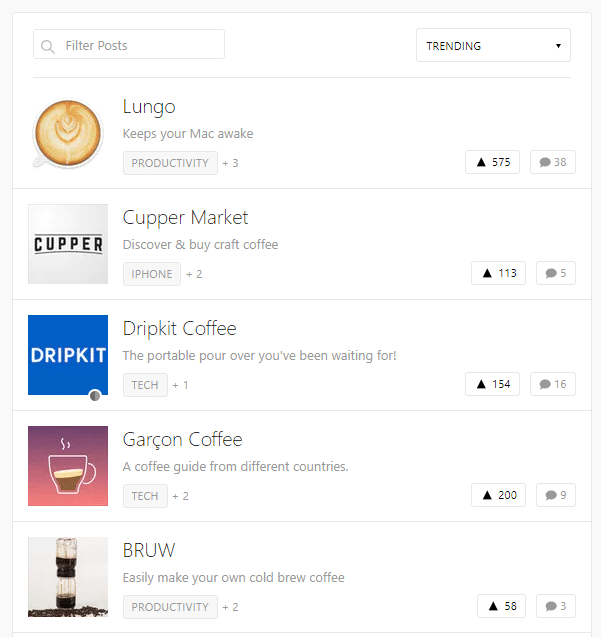


Step #2. Beta test your idea
Beta testing is the first thing you should be doing when you’ve got a product idea.
Instead of shelling out tons of money, you need to see if it’s practical.
Because if people won’t buy 10 copies, they’re not going to buy 10,000.
No need to invest a ton in production and inventory that might not pan out like you hoped.
Try to develop multiple prototypes like Jeremy did.
Jeremy began by simply roasting his coffee at home. He got those close to him to try it out.
At this point, he could see if they would buy or not. You don’t have to run a sophisticated A/B test here.
Most cities have a farmers market, for example. See if you can buy a booth for the weekend. Or better yet, see if someone there might consider carrying ~10 of your products to sell.
The point is to get strangers to give you money. Then you know you’ll have a decent shot at making it.
As Jeremy continued to dive deeper into this new world, he saw an opening in the marketplace to exploit.
Simply put: Specialty coffee required a ton of work to get your hands on if you weren’t already in the industry.
You can start beta testing and getting feedback on crowdfunding sites like Kickstarter.



Here you can get feedback and pledged money to hit your production goals.
This is perfect for going from 10 products to your first 1000. It allows you to take a proven concept a raise a little money from family and friends.
That way, you’re still not plunging your life savings into a relatively unproven concept.
Step #3. Share the product and test it live
The next step after creating a great beta-tested product is to share it with a real live audience.
Some larger cities have specialty coffee shops popping up, but most don’t.
So the specialty coffee idea started to slowly evolve from just another fun hobby into a potential money making scheme venture.
They sat down to run the numbers on how much capital investment would be required up front for machines, inventory, and operating capital.
While they didn’t have everything figured out, they did know there was demand for this product and that most specialty coffee enthusiasts are incredibly passionate.
Down the road, having an actual brick-and-mortar location was appealing. However, in the short term, they just decided to dive straight into selling online to see where things would lead.



Ideally, they wanted to test the marketplace and start bringing in revenue early instead of overinvesting in infrastructure that was overkill in the early days.
You can do this on your own with sites like Meetup that allow you to host small events in local areas:



The trick here isn’t to look for your specific product, like “coffee” in this case.
Instead, you want to look for where your potential customers might be.
For example, let’s say you think premium coffee will appeal to the young millennials inside startup companies who already frequent the few good, hipster coffee shops in the area.
These people are already meeting together on a daily basis. Here’s one quick search that turned up four similar results all happening around the same time.



You can easily get started by simply offering to bring a free sample of coffee for each group.
There are four groups here, so that’s one each week.
Converting just a few people at each meetup can add up to serious revenue over the long-haul.
Step #4. Create a value proposition
All of this stuff takes money.
It requires investing in products and packaging and distribution upfront.
The easiest way to cover your downside is to start by being pessimistic on initial sales.
That’s especially true when there are less expensive, commoditized versions of your product widely available.
He understands that his coffee sells for more than a typical bag at a local grocery store.
To combat that potential conversion friction, he has to be diligent about answering the question:
“Why should I buy your more expensive coffee?”
Answering those questions isn’t easy in the early days, especially when you’re testing out a new marketplace.
You need to craft a perfect value proposition that will create the idea that your product is really worth the money.
The trouble for Craft and Mason was that they did have some legitimate equipment they needed that would drive up their costs.
For example, a roaster can set you back anywhere from $10,000 on up to $200,000 on the high end.
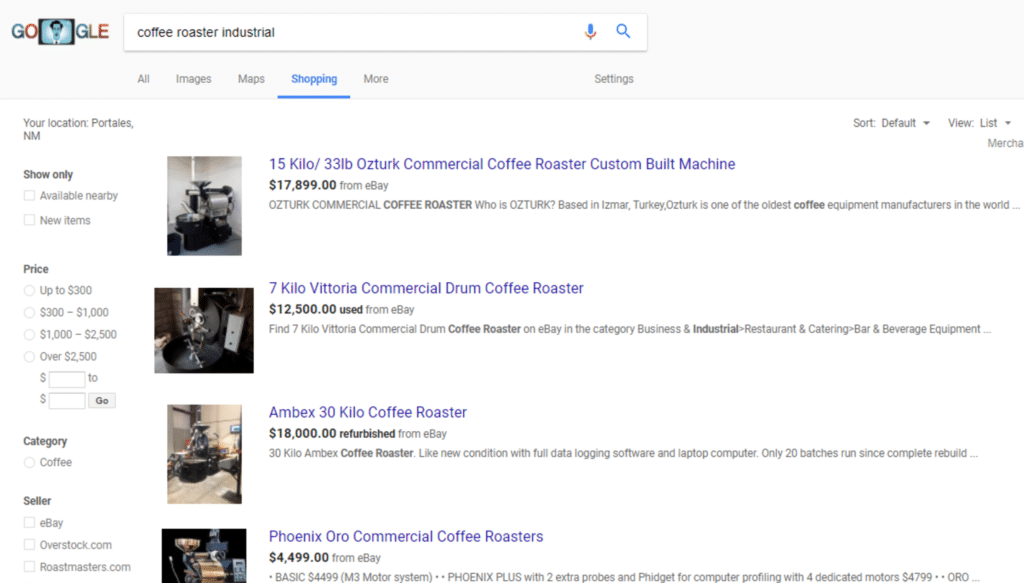


Most product companies are upside down financially before they even open their doors, so the margins tend to be tight in the beginning.
You have to plunge so much money and inventory into your first-time startup costs, that any and all ongoing expenses can come back to haunt you during the early days.
Keeping your expenses lower can also allow you to put any extra money you do have behind new upgrades.
For example, Craft and Mason care most about a quality product.
They didn’t hold back on investing in quality coffee or even upgrading to a new roaster a year after opening. But otherwise, they “pinched pennies” on everything else.
Their $17 bag of coffee, priced at more than twice most mainstream coffee, has to blow people’s expectations away at the end of the day.
And if there’s one thing they couldn’t skimp on, it was the quality of the product.
It was also important for them to grow sustainably from the profits of existing customers so that they didn’t have to pour more money in or take on a loan to fund ads or other areas.



With that, they had to create a value proposition that made sense. That fit their brand and established a want and need for their product:



To create a stellar value proposition, you should be sure to nail the following goals:



Step #5. Educate your market via benefits
Craft and Mason price their product at a steep premium.
But many new people who aren’t familiar with specialty premium coffee don’t always understand why it’s so expensive.
So they had to educate customers to build up the perceived value to match their pricing.
Most customers are going to require multiple ‘touch points’ before purchasing, anyway. But that only increases with premium products.
Craft and Mason use every opportunity possible, from their website, blog, social media, and even meeting people in person to help them understand the critical differences between their product and the typical cup of joe you can pick up anywhere down the street.



The second component of that is distribution or getting the product out where your potential customers can easily find it.
“The best way to win a customer over is to get them to try using it. Then, they’ll see the value in it, way better than words can describe.”
It’s easy to fall for the curse of knowledge when you’re dealing with a more sophisticated product.
You, as the creator or proprietor, already know all about your product value.
But you constantly have to re-frame and remember where your customers are coming from.
That even means taking a step backward to walk through the process, how and where you source products from, why those are superior, etc., etc.
Step #6. Cross-promote to other Brands (with no strings attached)
In the early days, you don’t always have available cash laying around for advertising.
You especially don’t have extra dough when you’re already sinking it into new equipment and inventory.
Most large retailers won’t carry your brand because you’re a complete unknown in the industry.
And SEO, too, is unrealistic because you have zero authority, popularity, or connections.
That leaves one viable solution: You need other people to refer you.
The trick is to reach out to new companies or groups without (1) pissing them off or (2) expecting something in return.
Craft and Mason started with a list of companies that they respected or appreciated for some specific reason. They’d reach out to these people and send a couple of bags along without any strings attached.
It’s similar to outreach on Reddit, for example.
Your approach and style can have a huge impact on the eventual results you see. Come off too pushy or aggressive, and things can backfire.
But if you’re sincere and care more about the connection or relationship first, more often than not, things work in your favor.



There wasn’t anything necessarily clever or sophisticated about this strategy.
They simply tried to make connections with adjacent brands that were complementary (but not competitive) with their brand.



Many times the product quality would win them over and lead to referrals, recommendations, official partnerships, and true word-of-mouth praise.
An easy way to reach out for cross-promotions with other brands is to simply send them an email.
Or you can reach out to influencers on sites like Tribe.



You can quickly create campaigns to work with social media influencers that fit your product niche:



Step #7. Follow up to re-engage customers
There was no grand plan for Craft and Mason in the early days.
They started and wanted to basically “see where things went.”
So instead of year long growth goals, they’re constantly iterating, fine-tuning, and tweaking based on real feedback.
Some businesses will take offense to critiques, and often will try to fix that relationship with the reviewer, rather than fixing the broken system in place.
Instead, Craft and Mason enjoy getting feedback, whether it’s good or bad.
They use it to improve their product into the best product it can be.
ShipStation helps Craft and Mason coordinate the entire fulfillment process, from order confirmation to shipping, on autopilot.
That helps simplify oversight, but more importantly, improve accuracy on every single order.
“Automation is huge, and for us, it was, when someone makes a purchase we want to guarantee, every time that they have really good customer experience.”
Similarly, automation could be used to follow up with new customers based on X-number of days after ordering.



That way they could keep a pulse of how to please each customer or even follow up with past purchasers who hadn’t been around in awhile.
For example, Return Path study analyzed the email reactivation campaigns of 33 different companies and narrowed it down to these two campaigns as the top performers.
- Tip 1: “Miss You” and “Come Back” were the most effective subject lines used in reactivation campaigns.
- Tip 2: Retailers that didn’t stop at one email had a higher success rate than those who did. A series of short, engaging emails that show that you care about the customer’s business are more likely to result in a win. Offer a discount or other incentive to get them to come back.
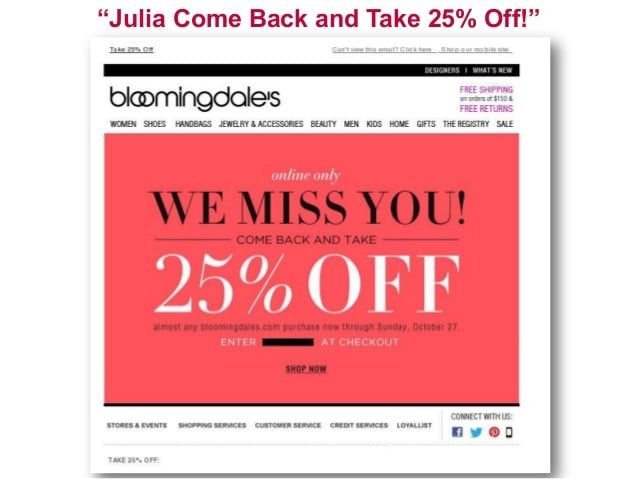


The findings also recommended that you start re-engaging your audience sooner rather than later.
Ever gotten an email from a brand that you don’t immediately recognize purchasing from in the past? This means they waited too long to reach out.
And then you should also reference their past purchases so that they remember who you are. This also shows that your relationship with them matters to your brand.
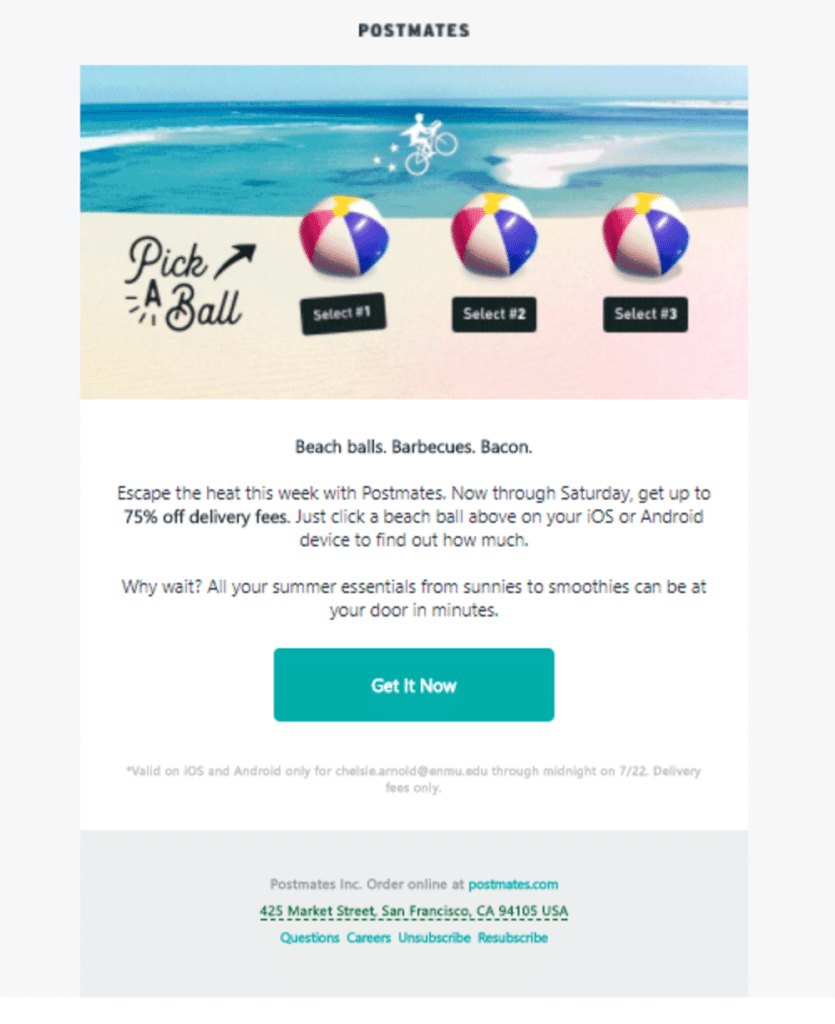




You can easily setup re-engagement emails on your favorite platforms like MailChimp.
Simply set up a new automated campaign and choose “Recover abandoned carts”:
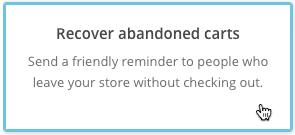


Then you can select when to send one:



Now you’ll never miss the chance to re-engage with potential buyers!
Step #8. Emphasize convenience with subscription boxes
Craft and Mason offer six-month subscription boxes to their clients.
The convenience keeps loyal customers happy, so they don’t even have to think about purchasing, while also providing the coffee company with recurring revenue at the beginning of each period (to help smooth out cash flow).
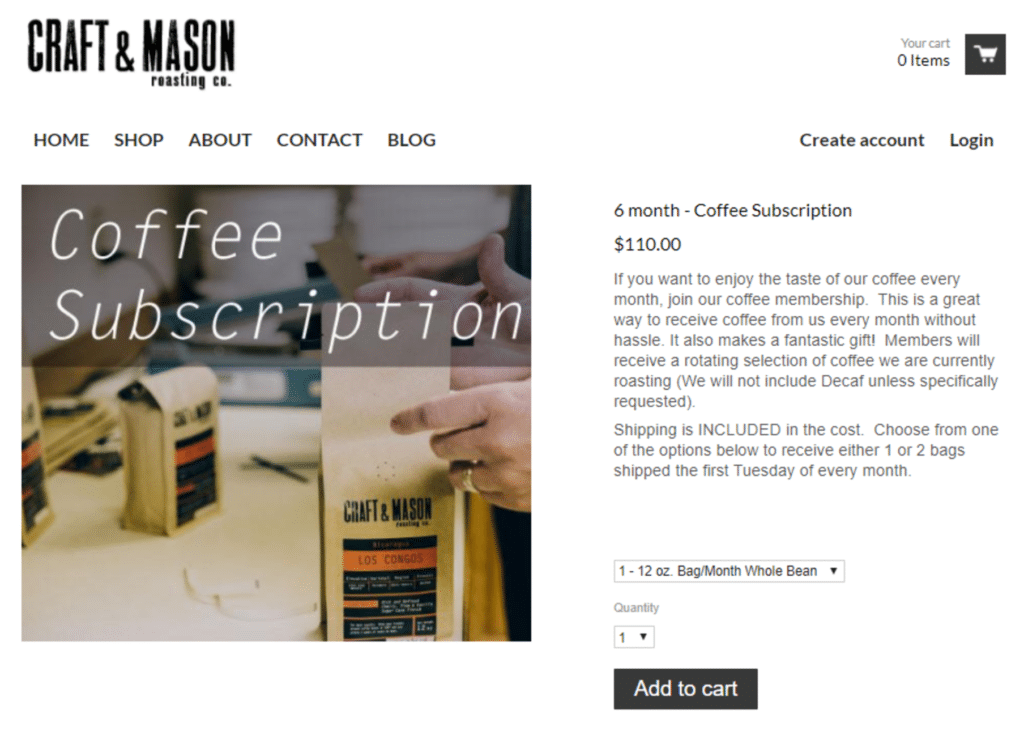


It’s a win-win according to Jeremy.
He capitalizes on the problem that non-subscription based businesses tend to see:
People forgetting to get on and order their product on time.
And instead of having frustrated customers, they automate the process to deliver the coffee without the user having to check back and confirm.
Just look at companies like Dollar Shave Club who are dominating the subscription based market.
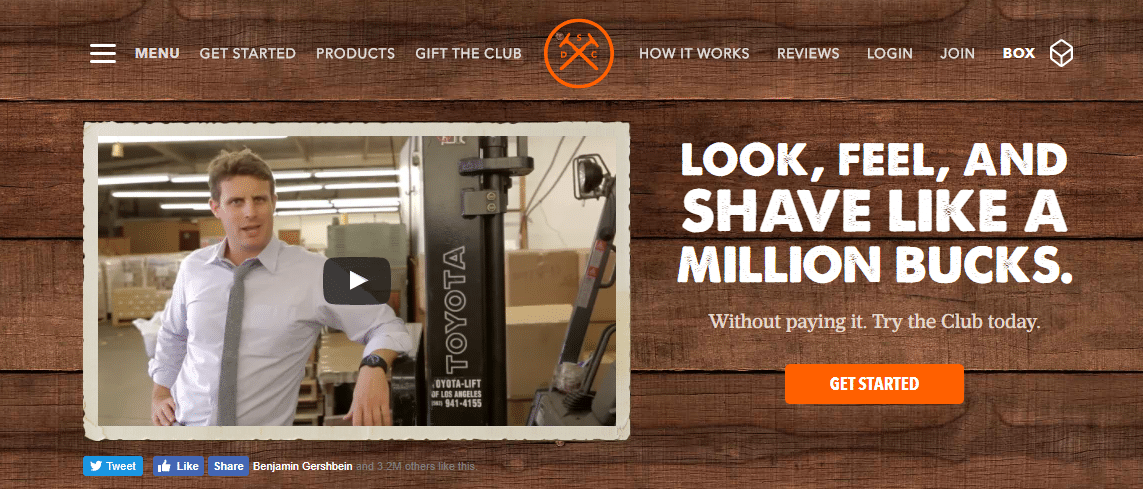


And if your payment info ever expires, or you pause your subscription, they continue to re-engage and emphasize the easiness of subscriptions:



Have you seen product-driven growth like this?
It’s never easy to grow a brand new business.
You’re constantly playing catch up from day one after investing so much capital up front on equipment and inventory.
Quality products and consistent education speak for themselves, though, according to Craft and Mason.
They sell for more than double the competition. They haven’t used any flashy growth marketing tactics.
And yet somehow, they’ve been able to make the right connections with brands who see the quality in what they do and decide to throw their weight behind it.
What areas in your own business can you pinch pennies in, to reinvest in quality?
How did that work for you?
What were your results?
Leave us a comment below to let us know.

Comments